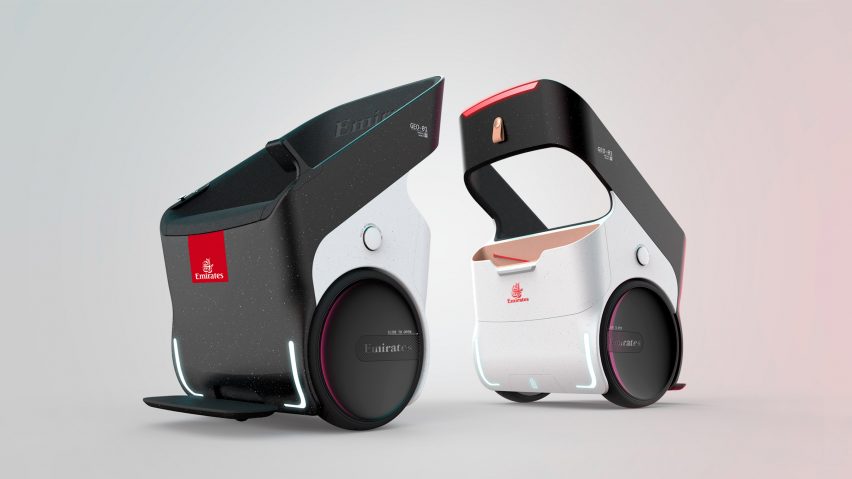
PriestmanGoode designs vehicle to help people with reduced mobility navigate airports
In a bid to "bring back the joy of air travel" for those with limited mobility, a consortium of UK companies including PriestmanGoode has developed a concept for a one-person autonomous airport vehicle.
Developed in collaboration with mobility company Centaur Robotics and software company Naurt, the accessible Geo concept is a self-balancing two-wheeled personal electric vehicle that fits into the space of a dining chair.
It can drive autonomously without the need for pedals or a steering wheel, and has an onboard virtual assistant that can provide directions and send reminders to help get passengers to their gate on time.
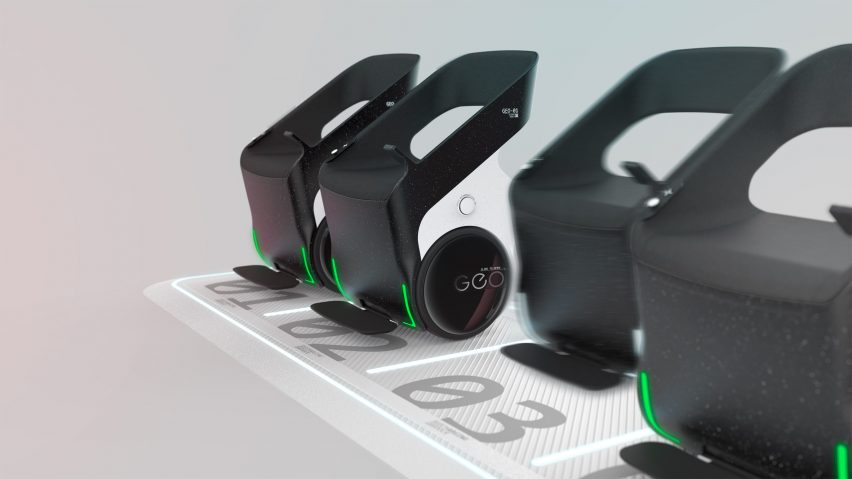
The consortium envisions the vehicle being provided by airports to give elderly people and those with disabilities greater control and autonomy while travelling.
"The travel experience is very different for passengers with reduced mobility," PriestmanGoode's Jo Rowan told Dezeen.
"What typically happens at an airport is that a wheelchair user is asked to arrive one hour before other passengers, they are met by an attendant at check-in and are taken directly to the gate."
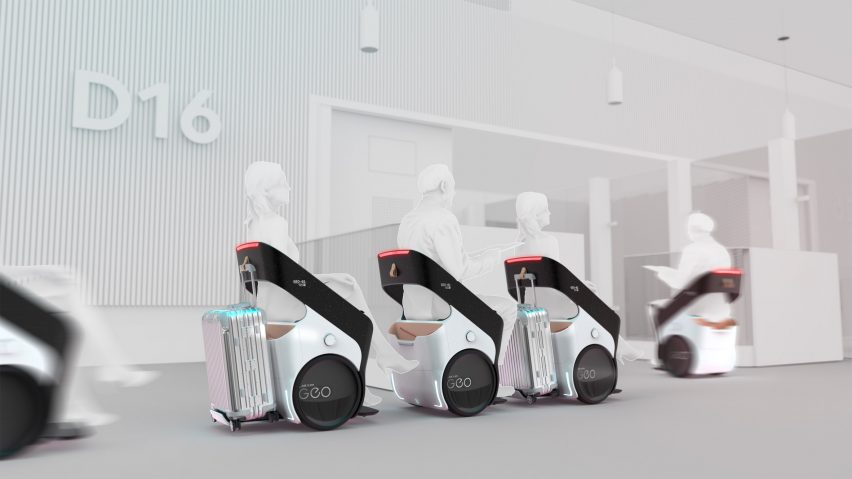
"In the research we conducted for Geo, one person described it as 'being held in a corral like cattle'," she added. "Better design has the potential to make the experience more equal and joyful."
This is especially crucial as the number of people requiring assistance on flights has doubled in the UK since 2015, with many "suffering degrading substandard treatment" at the airport, according to a recent open letter sent to the British Prime Minister from charity Disability Rights UK.
"Such instances have a huge human impact on the dignity of Disabled passengers and severely impact their confidence when travelling by air, meaning that many passengers with assistance needs will, in many cases, avoid travelling on airlines altogether," the charity wrote.
PriestmanGoode, Centaur Robotics and Naurt developed the Geo concept with help from urban mobility expert Robin Brownsell as part of a design competition run by Aviation X Lab – a Dubai incubator focused on the future of air travel.
The design is based on Centaur Robotics' self-balancing personal electric vehicle Centaur, which is able to elevate users so they can reach tables and engage in conversations at eye level.
To adapt the design to the airport context and "bring back the joy of air travel" for passengers with reduced mobility, the consortium conducted a series of workshops to understand where the current customer experience might be lacking.
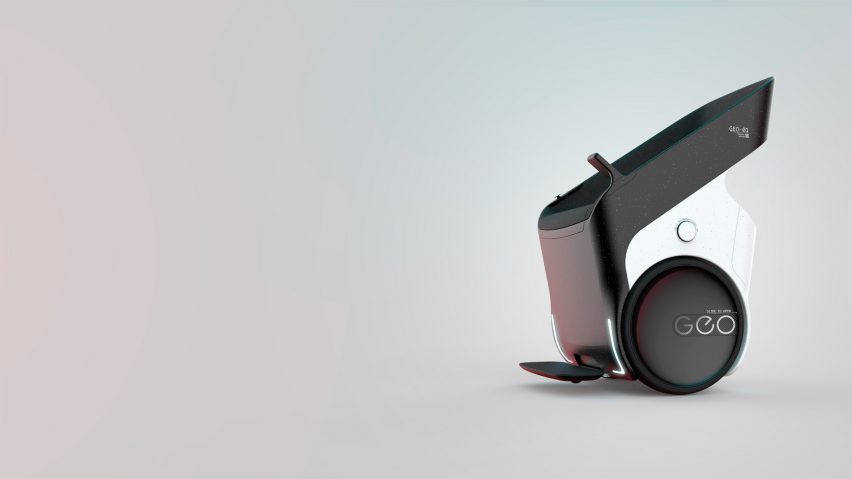
"Airport environments are complex if you think about all the stages of the journey such as bag-drop, security and the distances to the gate," said Rowan, who is PriestmanGoode's associate director of strategy and customer experience design.
"Therefore the range of stakeholders we have engaged with to reach the final of Aviation X Lab competition was very broad."
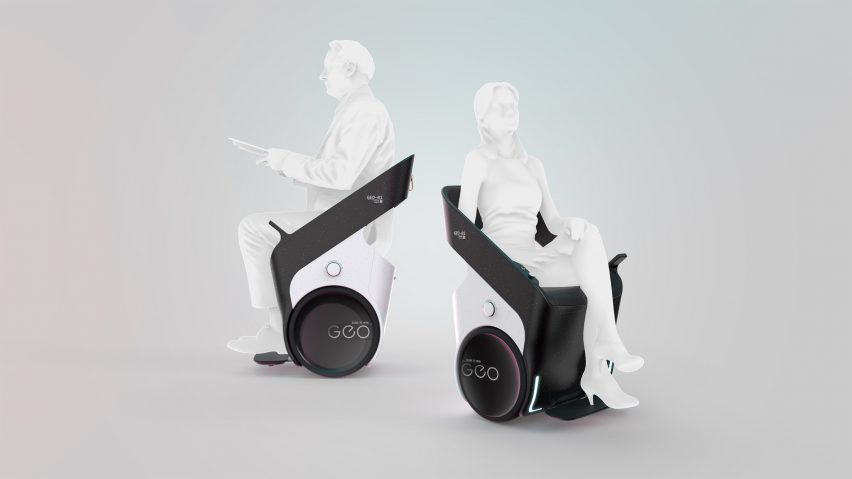
The autonomous driving functionality is made possible with the help of Naurt's location optimisation software.
This allows the vehicle to drive completely on its own but also lets the user remain in control. The user can intervene if needed with the help of a joystick and touch screen integrated into the seat.
PriestmanGoode also added an easily accessible storage compartment for luggage at the back of the seat, as well as imagining the surrounding infrastructure for the Geo vehicle from charging docks to collection points.
The team behind Geo is now aiming to work with a specific airport to create a proof-of-concept, considering all the local requirements and potential users. Feasibly, PriestmanGoode says the system could be realised at Dubai Airport within two years.
Equally, the same system could be applied to a range of different contexts, Rowan argues. "The consortium is very excited about the opportunity to extend the Geo experience to include shopping centres, cruise ships and other communities," she said.
PriestmanGoode is known for its innovative transport designs, with recent concepts including a scooter that encourages older people to stay active for longer and a voice-absorbing face mask for making calls on public transport.